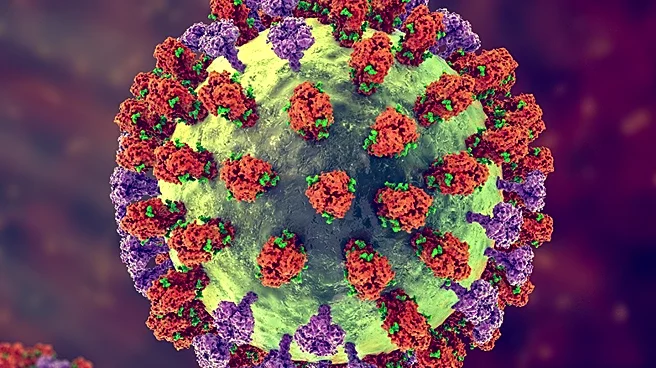What's Happening?
Researchers at Karolinska Institutet have discovered a protein, LRP8, on the surface of cells that facilitates the entry of the tick-borne encephalitis (TBE) virus into the body. Published in Nature, the study reveals that LRP8 acts as a receptor for the virus, allowing it to bind and enter brain cells. This discovery could lead to new treatments for TBE, a serious neurological disease spread by ticks. The research involved exposing a library of cell variants to the TBE virus, identifying LRP8 as crucial for infection. The study highlights the potential for developing drugs that prevent the virus from entering cells.
Why It's Important?
The identification of LRP8 as a receptor for the TBE virus opens new avenues for therapeutic interventions against TBE and other flavivirus-caused diseases. As the tick population grows, the incidence of TBE is increasing, making the development of effective treatments critical. This discovery could lead to drugs that block the virus's entry into cells, reducing the impact of TBE on public health. Additionally, the research provides insights into the mechanisms of flavivirus infections, potentially aiding in the development of treatments for related diseases like dengue fever and yellow fever.
What's Next?
Further studies are needed to understand the precise role of LRP8 in TBE virus infection and its effects on brain neurons. Researchers aim to explore the molecular interactions between LRP8 and the virus, which could lead to the development of targeted therapies. The study also opens the possibility of identifying receptors for other flaviviruses, potentially leading to broader antiviral strategies. Continued research will focus on the development of drugs that can prevent or limit flavivirus infections, addressing a growing public health concern.
Beyond the Headlines
The discovery of LRP8's role in TBE virus entry challenges existing models of viral infection, emphasizing the importance of host cell receptors in disease progression. This research could lead to a reevaluation of antiviral strategies, focusing on blocking receptor-virus interactions. The findings also highlight the need for high-security laboratory conditions when studying high-risk viruses, underscoring the importance of safety in virology research.










